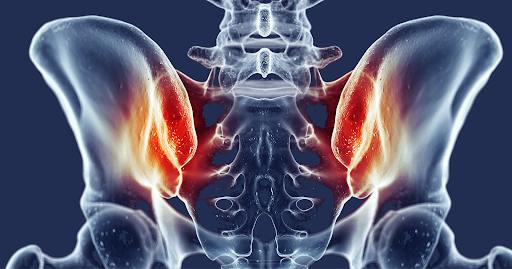Dr Raos hospital is the best for MIS SI joint immobilization
Dr. Rao’s Hospital is a Neurology Hospital in Guntur that offers SI joint dysfunction treatment. Dr. Rao is a leading neurosurgeon in Guntur who focuses on providing comprehensive treatment of SI Joint.
If you suffer from pain in the lower back accompanied by leg ache, you need to approach a neurosurgeon for a thorough check-up of your lower back, especially the sacroiliac joint, for dysfunction.
What is sacroiliac joint dysfunction?
The joints at the bottom of the spine that link the sacrum to the pelvis are called sacroiliac joint dysfunction. It can cause pain in the low back and legs, as well as sacroiliitis, or inflammation of the joints.
What and where is the sacroiliac joint located?
The sacroiliac joint is located on either side of the lower spine vertebrae. These joints connect the large bone or the sacrum, just above the tailbone and at the base of the spine to the pelvic bone. The main function of the sacroiliac joint is to bear the load of the upper body and shift it to the legs when the individual stands or moves.

Dysfunction in the sacroiliac joint refers to improper movement resulting in pain in the lower back and legs.
The patient is likely to suffer from inflammation of the joints, known as sacroiliitis.
A patient affected with sacroiliitis cannot move as required and complains of low back pain with pain in the legs. The reason is that the sacroiliac joints are either overworked or underworked. In addition, there is loosening of the supporting ligament in case of excess movement of SI joint, while arthritis is the reason that causes issues in movement.
Diagnosis of the sacroiliac joint function
Accurate identification of sacroiliac joint function or other musculoskeletal conditions is essential. Therefore, the treating neurosurgeon conducts a physical examination and observes the patient’s standing and walking pattern, followed by lying on the examination table for further diagnosis.

Dr. Mohana Rao Patibandla is an internationally trained neurosurgeon with training in all subspecialties in the Neurosciences. He is an accomplished neurosurgeon who conducts extensive diagnosis and testing to ascertain the extent of inflammation in the sacroiliac joint function. Patients suffering from SI dysfunction can seek his consultation at Dr. Rao’s Hospital in Guntur, Andhra Pradesh.
The neurosurgeon performs two reliable tests to detect SI dysfunction viz.
Distraction Test –
The patient lies on the table while the doctor applies pressure to both sides of the pelvis.
Thigh Thrust –
In the test, the doctor bends one knee towards the chest while the other leg is moved sideways from the table.
If the patient complains of pain during these tests, the SI joint dysfunction condition is confirmed. A couple of tests along with these help in ascertaining the dysfunction of the SI, so on average positive result is considered adequate in its diagnosis.
Treatments for sacroiliac joint dysfunction
Initially, the doctor will recommend conservative treatments such as rest, heat, and ice to bring relief from SI joint pain. If required, the doctor recommends
Medication
The doctor can recommend ibuprofen or naproxen or other nonsteroidal anti-inflammatory drugs (NSAIDs) to relieve pain. It is advisable to seek proper medication to reduce the inflammation and the swelling in the joint while focusing on reducing the pain.
Physical Therapy
Physical therapy is suggested after the pain and inflammation of the SI joint have been considerably reduced. The main focus of physical therapy is to build the strength and flexibility of the SI joint. A healthy and strong SI joint enables more mobility in the patient. Also, the physical therapist will suggest correct walking gait and posture movement for better management of the SI joint.
The physical therapist can recommend wearing a special belt that supports the back and the SI joint for a temporary period. In case of discrepancy in leg length, insertion of special inserts or lifts is recommended.
Nerve Block
The doctor recommends a pain-relieving injection within the joint to relieve the pain and reduce the inflammation. It is an outpatient treatment, but an x-ray or an ultrasound is referred to select the right place to inject the steroid injection for relief. It takes at least 3 – 7 days for the steroids to start working and relieve the patient from pain. The doctor recommends a repeat dose after 2 – 4 months in case of recurring pain. Surgery is advisable for persistent pain experienced over a couple of years.
Radiofrequency ablation in the SI joint
Radiofrequency ablation (RFA) is an injection procedure used to relieve pain in the sacroiliac joints of the hip. This treatment aims to improve the range of motion and functionality, reduce the intake of pain killers, and avoid or delay the surgery, which has its share of risks and complications. This treatment is recommended after steroids, and other injection treatments have been administered to relieve the pain in the SI joint.
Ina radiofrequency ablation procedure, a heat lesion is created via a radiofrequency needle in the painful nerve. The heat lesion prevents the nerve from transmitting pain signals to the brain. A normal radiofrequency ablation procedure will relieve the patient from pain from six to eight months.
SI joint fusion
The goal of sacroiliac joint fusion surgery is to reduce pain and instability caused due to inflammation and dysfunction of the joint. The surgery will use a bone graft or instruments that encourage bone growth over the inflamed joint and provide stability in movement.
Dr. Rao’s hospital is one of the leading neurology hospitals in Guntur that offers consultation and treatment of sacroiliac joint dysfunction and a rehabilitation plan to ensure mobility of the joint.

